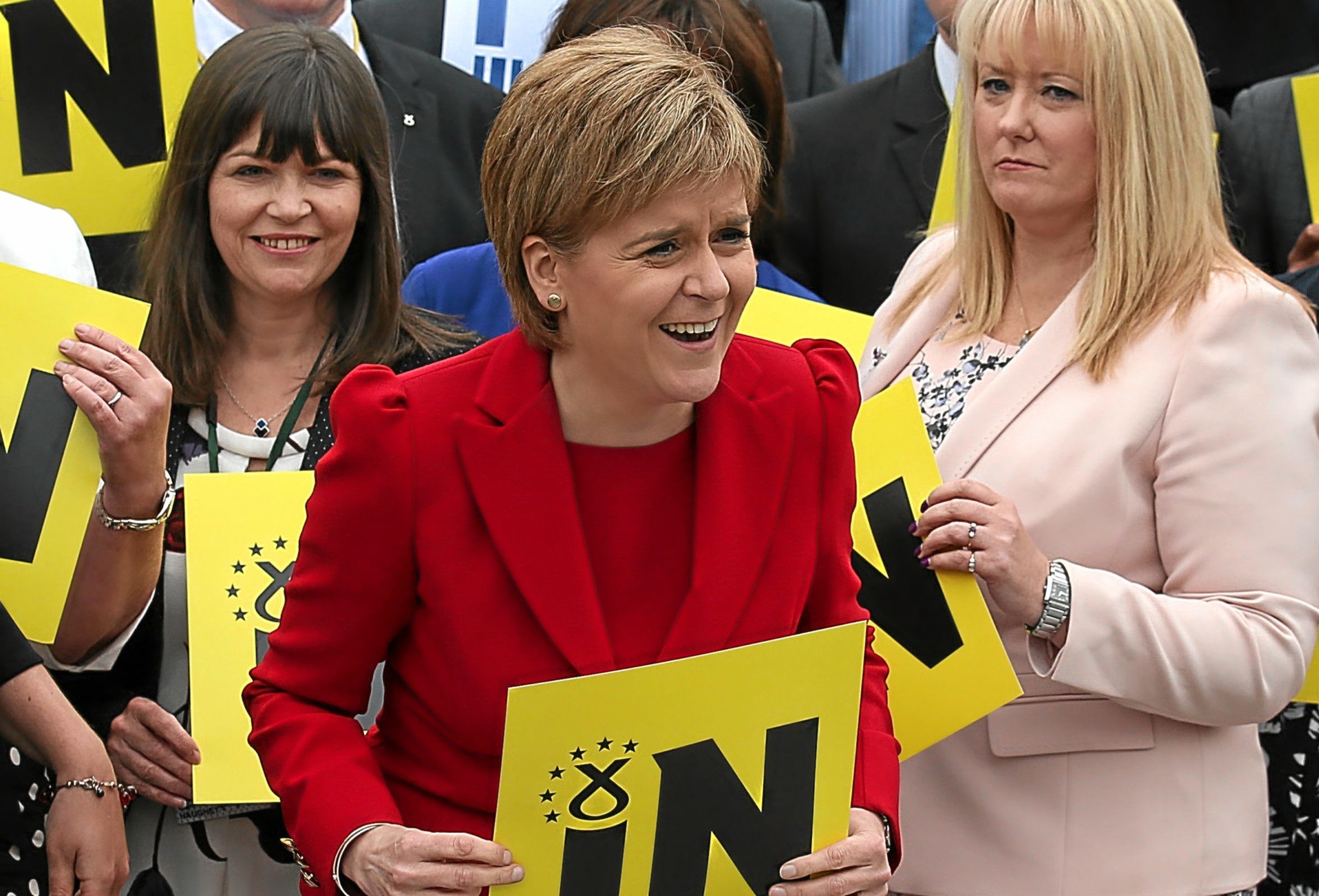With politicians changing sides at the 11th hour of the EU referendum campaign, it is hardly surprising voters have been confused and many are said to be undecided even now.
Baroness Warsi, a former chairman of the Conservative Party, announced at the start of the week that she could no longer back Brexit because of the “hate and xenophobia” of its anti-immigration agenda.
Cynics might suggest she is looking to her future and, with the Remain camp developing a lead, has decided to support the Prime Minister.
Her late defection has little bearing in Scotland and most voters here have probably never heard of her. However, her dithering does reflect the lack of conviction much of the electorate has had over Europe.
Difficult choice
In Scotland, making up your mind is, if anything, more difficult – especially if you are a Scottish Nationalist.
Ever since Nicola Sturgeon said a vote by the UK to leave would be a trigger for a second independence referendum, separatists have been torn over Europe and there is likely to be a significant number of Nationalists who believe the EU is a sub-plot to the far greater narrative of Scottish secession.
Although their party’s official position is to remain within the EU, it must be very tempting for them to back Brexit, knowing that leaving could bring their real goal closer.
There must be genuine concern in the senior echelons of the SNP that swathes of Nationalist voters – ostensibly of pro-European inclinations – could alter the result in favour of the Leave campaign.
Sturgeon was desperately trying to point out the foolishness of such a position earlier this week, saying a rerun of the Scottish referendum could only be justified if a majority of Scots voted to stay in Europe.
However, a new problem emerges if all those SNP voters follow their leader’s advice and help Britain to remain in the EU. Then, there will be no more triggers on the horizon.
Sturgeon has acknowledged as much herself and said the process of building support for independence could take years, if not generations.
How will this go down with the newly radicalised party members who joined up in the wake of the 2014 defeat? Until now, Sturgeon has had the prospect of the EU to dangle in front of disappointed separatists.
She may know that the time is not right to hold another plebiscite on independence – opinion polls have given no encouragement to the Nationalists and she can gauge the level of public boredom with repeated campaigns.
However, her supporters are not so politically shrewd.
Their obsession with Scottish independence overrides everything, even reason, which makes them convinced their objective is achievable in the short term.
Sturgeon has managed so far to sound equivocal, omitting a clear commitment to a second referendum in her party’s manifesto in May but talking up the chances of breaking away as recently as last week.
“If Scotland faces the prospect of being taken out of the European Union against our democratically expressed will, all options to protect our relationship with Europe and the European Union will require to be considered”, she said just a few days ago.
How is she going to pacify the activists when she no longer has the European debate to hide behind?
The First Minister is held in high regard by her party faithful but that respect may start to drain away with their dreams of independence.
Casting aspersions
The SNP’s former deputy leader, Jim Sillars, a Brexit campaigner, has already cast aspersions over her EU logic and blamed the wording of the party manifesto for failing to offer a second chance on independence.
Regardless of the vote tomorrow, Nationalists, he said, would have to wait until the next Holyrood election at the earliest to rekindle their Yes hopes.
It is possible to see the more excitable elements in the SNP jumping on this bandwagon if Britain stays in Europe and perhaps even coalescing around an alternative figurehead, such as Sillars.
Nationalists falling out with each other should be a joyous sight for Unionists but we should be careful what we wish for. If Sturgeon has to devote her energies to containing separatist disillusionment, her government will be a distracted one.
Those of us who hope tomorrow brings a Remain victory also pray that in Scotland it doesn’t lead to a prolonged bout of further Nationalist navel gazing. With the European question settled, the government should be able to get on with governing.
Of course, the EU battle will leave deep wounds at Westminster and it’s hard to see how the Tories will heal their rifts.
However, the same degree of bitterness has not plagued the campaign here. How sad if the Nationalists use European unity to create Scottish dissent.
